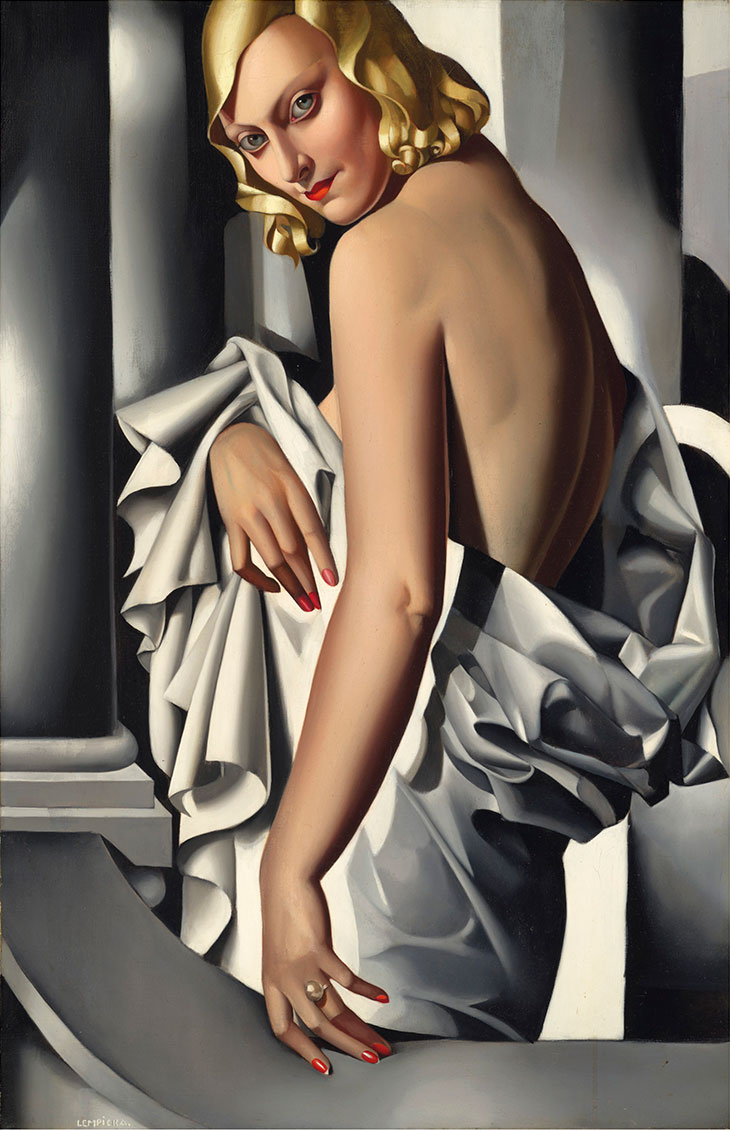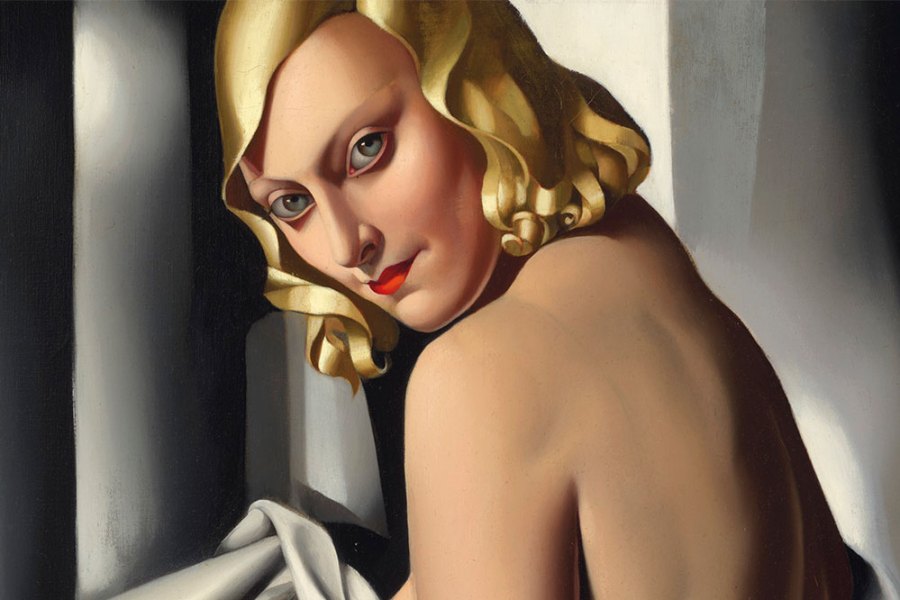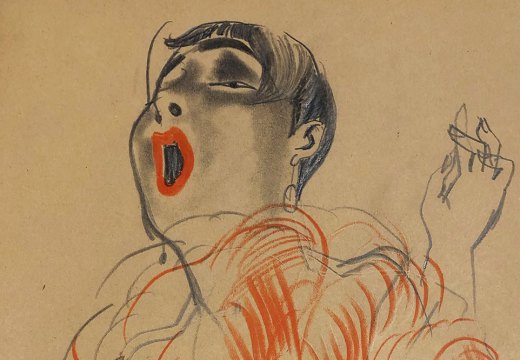Tamara de Lempicka’s high society portraits of the 1920s and ’30s are both instantly recognisable and quite unlike any others. Ever since the revival of interest in art deco in the 1960s and the retrospective of her work from this period at Galerie du Luxembourg in Paris in 1972, her star – highly unusually in a notoriously capricious art market – has remained in the ascendant. While her life, as fantastical as any fiction, provided the subject for Tamara (1981), the longest-running play in Los Angeles, her art has also enjoyed the limelight in the music videos of Madonna, a keen collector of the artist’s work. Now the Warsaw-born painter has been accorded another accolade of sorts: she is the first woman artist to have a work featured on the cover of a Christie’s Impressionist and Modern Art evening sale catalogue.
Portrait de Marjorie Ferry, painted in 1932 in the artist’s studio on rue Méchain in Paris, comes to the block in London on 5 February. The auction record for the artist set by Christie’s in 2018 for La Musicienne (1929) – $9.1m – was broken again last November when La Tunique Rose (1927) fetched $13.3m at Sotheby’s in New York. Will a new record be achieved this spring? This is an artist, and a sitter, with a siren call.
Marjorie Ferry, a well-known British chanteuse performing in Paris, is the quintessence of Jazz Age glamour, coolly seductive and unmistakably modern. In fact, there is something of the ocean liner about her streamlined, metallic glossiness. Standing by the curved railing of a staircase or balcony, she turns her head and poses like a goddess of the silver screen, her sleek blond helmet of hair falling across her forehead like Carole Lombard’s and her head cropped as if by a camera.

Portrait de Marjorie Ferry (1932), Tamara de Lempicka. Courtesy Christie’s
What is fascinating about Lempicka’s paintings of the 1920s and early ’30s – when she was at the height of her success – is how she forged her singular style from a host of disparate sources. She drew from the cubism and purism of her contemporaries in Paris, and turned back to Ingres to emulate the perfection of his idealised nudes and to the masters of the quattrocento, whose paintings she loved ‘[b]ecause they were so clear, they were so neat’. The influence of the latter is evident in here in the highly stylised, angular drapery that enfolds Ferry’s body. Yet perhaps Lempicka’s aesthetic is closest to that of the 16th-century mannerist master Bronzino, in the inhuman, lapidary quality of the flesh and the sumptuousness of the fabrics – fascinating and repellant in equal measure.
It is easy to see why Madonna is drawn to Lempicka’s portraits – not only for the glamour but also for their sense of female empowerment and success. One of Lempicka’s best-known works is a self-portrait in leather helmet and gloves, the artist speeding along at the wheel of a Bugatti racing car, commissioned for the cover of the German fashion magazine Die Dame in 1929 (Portrait de Marjorie Ferry belonged to the fashion designer Wolfgang Joop between 1995 and 2009). Lempicka was a child of privilege who fled post-Revolutionary Russia for Paris, and who by dint of her own determination and talent financed an independent lifestyle that was as extravagantly stylish as it was notorious. She painted women who were liberated and confident in their sexuality. Alongside her two marriages she had numerous affairs with both women and men. It may have been one of her lovers, the nightclub singer and actress Suzy Solidor, who introduced Lempicka to the newly affianced Ferry (note the conspicuous whopper of an engagement ring on her finger).
It is tempting to see Tamara de Lempicka’s appeal now in context of the current interest both in women painters and in queer art, as well as the wider appeal of easy-on-the-eye figuration (the Christie’s catalogue’s back cover is given to Magritte’s Á la rencontre du plaisir (1962), which leads the following Art of the Surreal sale). Consigned by a European collector, the widely exhibited Portrait de Marjorie Ferry comes to auction with a third-party guarantee and an estimate of £8m–£12m.
The Impressionist and Modern Art Evening Sale at Christie’s London is on 5 February.
Unlimited access from just $16 every 3 months
Subscribe to get unlimited and exclusive access to the top art stories, interviews and exhibition reviews.














![Masterpiece [Re]discovery 2022. Photo: Ben Fisher Photography, courtesy of Masterpiece London](http://www.apollo-magazine.com/wp-content/uploads/2022/07/MPL2022_4263.jpg)
It’s time for the government of London to return to its rightful home